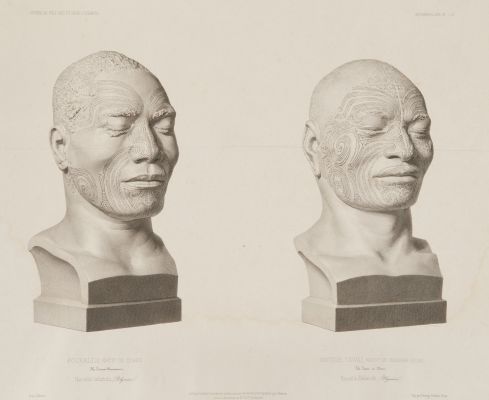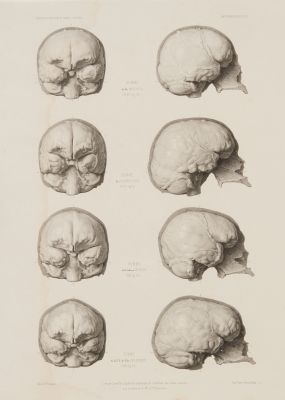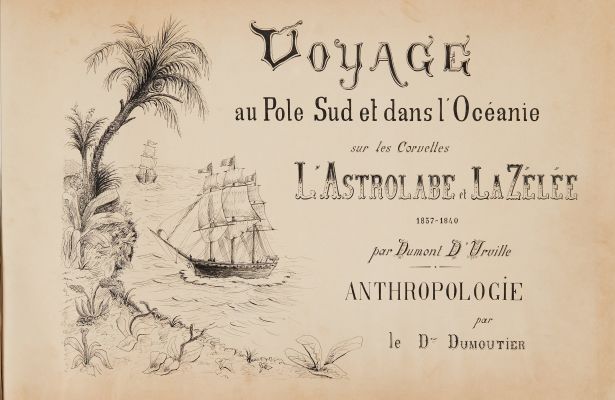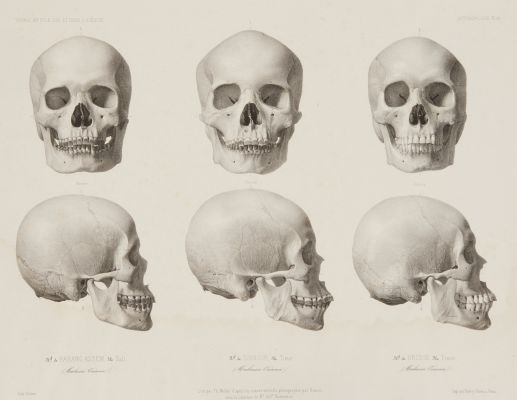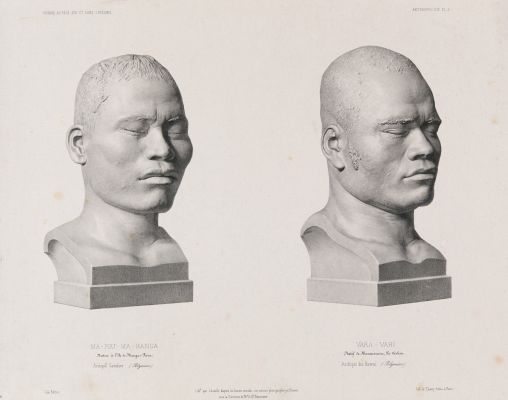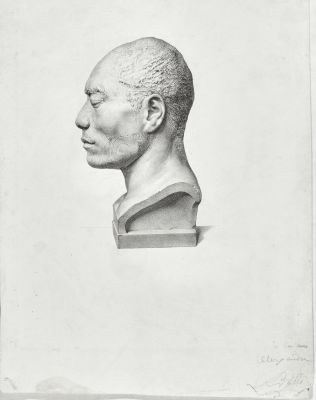
Title
PL. 29 des MarquisesArtist
Bisson, Louis-Auguste (French, 1814-1876)Publication
Voyage au Pole Sud et dans L'Océanie; Atlas AnthropologiqueDate
1846 plate (1841 negative)Process
Lithograph (from photograph)Atelier
LeveilléImage Size
30 x 38 cmSheet Size
35.5 x 54.6 cm
The ‘mysterious connection’ between the image and the subject is mediated by three separate (yet intertwined) processes. Here, the trace of life is filtered through the life cast, the daguerreotype and the lithograph.
Produced at the very dawn of the photographic era, this extraordinary project reproduced daguerreotypes taken by Louis-Auguste Bisson around 1841 and is one of the earliest uses of photography as a scientific mirror of the external world. The prints show life-casts and skulls of pacific natives made and/or collected during explorer Jules Sébastien César Dumont d’Urville’s 1837-1840 voyage through the Pacific and the Antarctic circle. The phrenologist, Pierre-Marie Dumoutier, who travelled with the expedition collected the life cast samples of the indigenous populations. The materials were used to substantiate d’Urville’s belief in a stratified racial hierarchy among the inhabitants of the South Pacific region.
The invention of photography occurred after Dumont d’Urville had set off but upon his return he had the materials he collected photographed. The life casts and skulls fulfilled a desire for objective accuracy and scientific exactitude, and he quickly realized photography could satisfy the same agenda.
The lithographs are remarkably successful in capturing the three-dimensionality inherent in the daguerreotype images of the casts and skulls. Several of Bisson’s daguerreotypes from the voyage have survived.
This rare set of plates served as proofs in the production of the luxurious atlas of this important publication.
References
Art Gallery of New South Wales https://www.artgallery.nsw.gov.au/collection/works/305.2013/. viewed Jan 31, 2023
Batchen, Geoffrey. Apparitions: The Photograph and Its Image., 2017
Kane, J. ‘The Somnambulists: Photographic Portraits from before Photography’. Stockport, England: Dewi Lewis Publishing with National Galleries of Scotland. 2008 p 5
